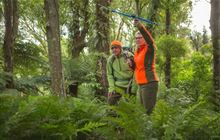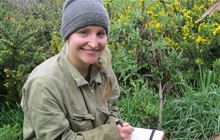Invertebrates inventory and monitoring
Introduction
This module describes methods to inventory and monitor invertebrates.How to use this module
- Read project planning guides.
- Read the methods to inventory and monitor invertebrates.
- Consult the introduction and the comparative tables and decision trees to help you select the method(s) most appropriate for your study.
- Read the method descriptions to inventory and monitor animal pests.
- Be aware of the minimum data collection standards for methods.
- Check if any training is available for this method.
Introduction
How to decide the best method for invertebrate monitoring (PDF, 673K)
Read this introduction and consult the comparative tables and decision trees to help you decide the method(s) best suited for your project objectives.
Introduction to statistical analysis of invertebrate monitoring data (PDF, 1,523K)
This document describes how to make the most of invertebrate monitoring data and the basic principles of analysis.
Methods
Pitfall trapping for invertebrates (PDF, 1,787K)
This method describes how to use pitfall traps monitor the activity of invertebrate species and to estimate an index of relative abundance to monitor change in one site over time or between different places.
Light trapping for invertebrates (PDF, 1,234K)
Pitfall light intercept trapping for invertebrates. Light traps sample moth and other invertebrates such as adult aquatic insects to reveal the diversity of different insects present across seasons, landscapes and habitats.
Search and extraction for invertebrates (PDF, 2,030K)
This method describes how to use hand searching, foliage beating, sweep netting and soil and litter extraction to survey for the species present. Occasionally they can be used for quantitative survey and monitoring.
Malaise trapping for invertebrates (PDF, 1,101K)
Malaise traps are suitable to inventory and monitor the presence/absence and relative abundance of flying insects (excluding moths).
Mark-recapture for estimating abundance for invertebrates (PDF, 907K)
This method is used to estimate the abundance of a population and to monitor how this changes over time.
Other documents
Advice and diagnostic support (PDF, 386K)
This document directs you to the institutions and individuals that can assist you to identify invertebrate samples.
Invertebrates: Sorting invertebrate samples (PDF, 828K)
This describes an easy step by step process to collect, sort, label and record your invertebrate specimens.
Invertebrates: Invertebrate identification aids (PDF, 941K)
Need to identify your invertebrate specimens? This great resource explains how to handle and identify specimens with a list of national experts you can contact for help.
Example of an invertebrate monitoring datasheet (XLS, 100K) and (PDF, 24K)
This is an example of how to enter invertebrate monitoring data into a standard datasheet.
Micro-snails (PDF, 664K)
Collecting micro snails in terrestrial and freshwater environments.



